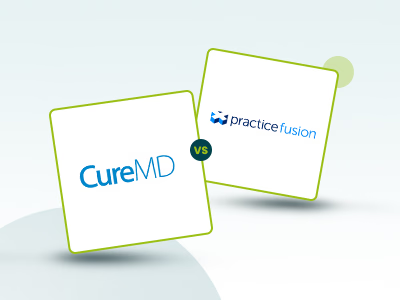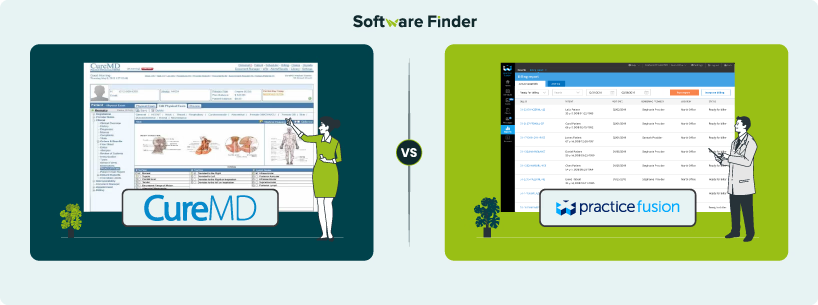
Starting Price: Custom Best For: Cardiology, Dermatology Mobile App: iOS Rating: 3.3 ★★★★★ | Starting Price: $199/provider/month* Best For: Solo Practices Mobile App: Not Available Rating: 3.6 ★★★★★ Disclaimer: The pricing is subject to change. |
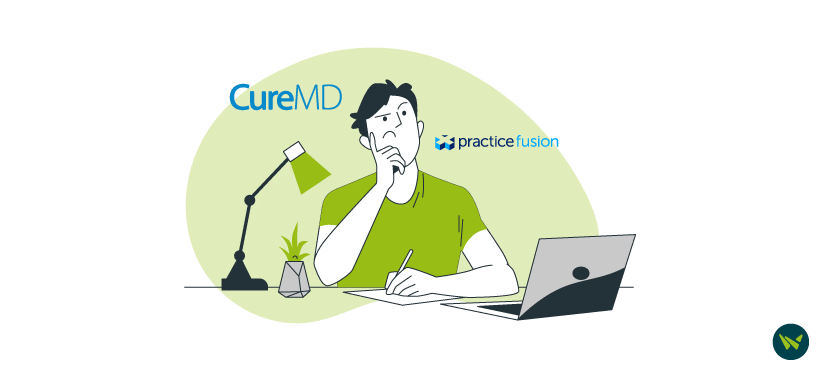
Running a healthcare practice is becoming more expensive every year. Recent data from 2025 shows that 90% of medical groups reported higher year-to-date operating expenses compared to 2024, with an average increase of 11.1%. This steady rise in costs means small to mid-sized practices must be even more careful when choosing tools like electronic health record (EHR) systems, which can directly impact efficiency, care quality, and overall financial performance.
CureMD and Practice Fusion are two popular EHR options that cater to a range of growing practices. Both offer an advanced suite of tools to streamline clinical and administrative workflows, but they differ in features, pricing, and overall usability.
In this CureMD vs Practice Fusion comparison, we will break down the key differences between the two platforms to help you decide which one is the better fit for your practice.
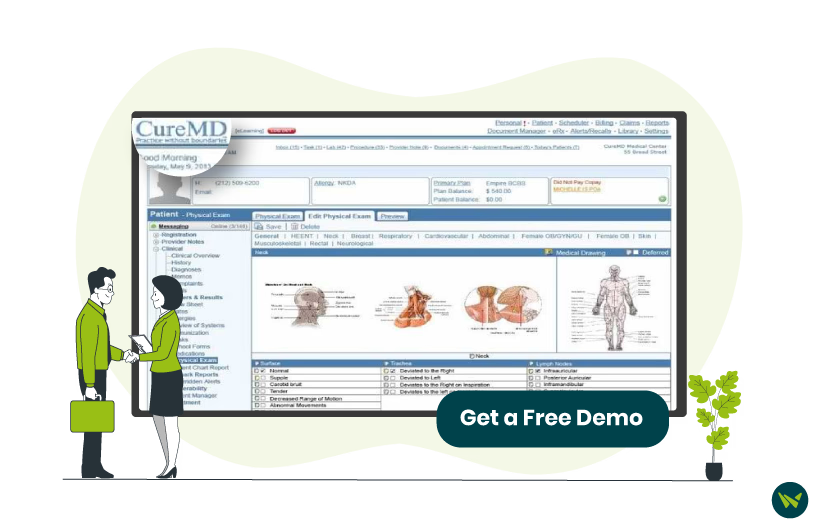
CureMD is a cloud-based EHR platform designed to support a wide range of medical specialties with integrated practice management and billing services. It offers customizable workflows, specialty-specific templates, and a user-friendly interface accessible on iPad and iPhone. The system includes tools for scheduling, eligibility checks, medical billing, and MIPS/MACRA reporting to help practices stay compliant and financially efficient. CureMD was also ranked the top EMR by Black Book in 2025 and offers award-winning support to streamline care delivery and improve the patient experience.
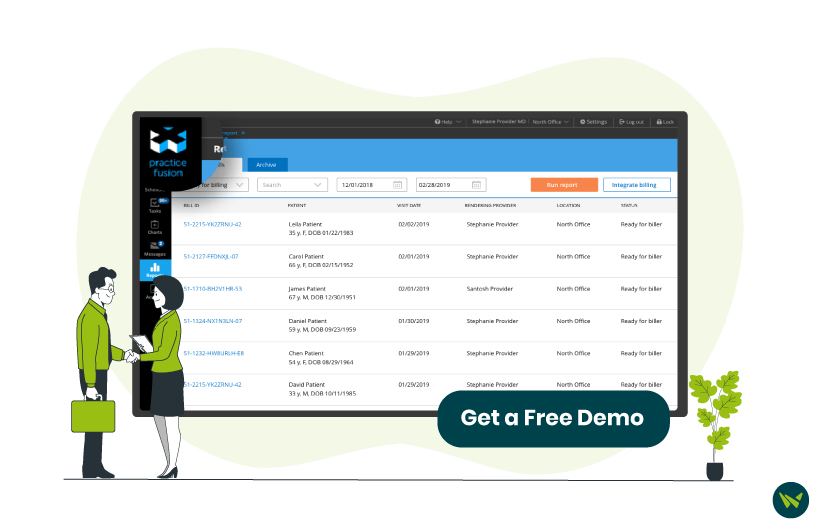
Practice Fusion is a cloud-based EHR and billing platform designed to help independent medical practices across more than 30 specialties operate more efficiently. It offers tools for charting, e-prescribing, patient communication, and billing within a user-friendly interface. The platform is built with input from healthcare providers to reduce administrative burden and improve patient care. Trusted by over 112,000 medical professionals, Practice Fusion supports a wide range of practice needs with an intuitive, human-centered design.
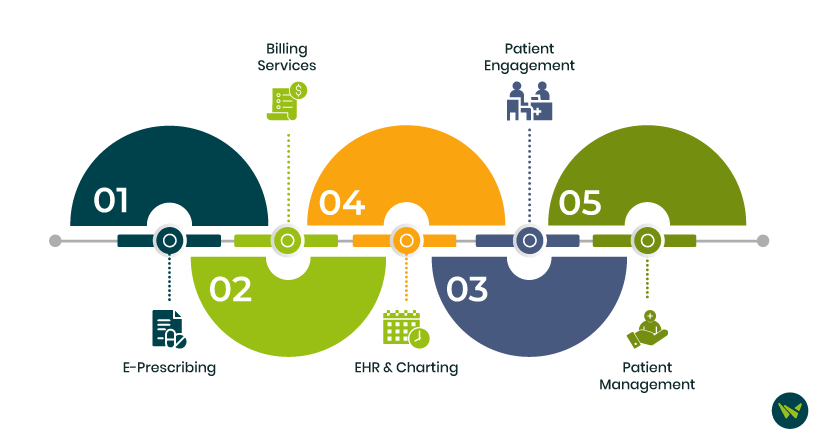
Feature | CureMD | Practice Fusion |
E-Prescribing | ✓ | ✓ |
AI Capabilities | ✓ | ✓ |
Telemedicine | ✓ | ✓ |
Patient Portal | ✓ | ✓ |
Scheduling | ✓ | ✓ |
Electronic Labs | ✓ | ✓ |
Billing Services | ✓ | ✓ |
Interoperability | ✓ | ✓ |
Pros Customizable user interface options Stores long-term lab reports Multiple calendar view options Simplifies follow-up coordination Well-organized charting workflows Cons Difficult vaccine input process Slow and inefficient claim follow-ups Delayed customer support responses | Pros Customizable medication order sets Works well across most specialties Macros simplify the documentation process Responsive and user-friendly design Great accessibility across devices Cons Difficult to delete appointments Doesn’t track metrics over visits No built-in faxing feature |

CureMD follows a personalized pricing model tailored to the specific needs of each practice. It offers four core modules, which include ‘Practice Management’, ‘Electronic Health Records’, ‘Billing Services’ (starting as low as 3% of collections), and an ‘All-in-One' package that combines PM and EHR. Costs vary based on practice size, specialty, and required features, allowing organizations to only pay for what they need.
Practice Fusion offers transparent, fixed pricing starting at $199/provider/month, billed annually. The plan includes three signing staff licenses and unlimited non-signing staff licenses, with essential EHR tools such as charting, e-prescribing, patient portal access, and appointment scheduling. This model suits small practices looking for an affordable, predictable monthly cost.
Disclaimer: The pricing is subject to change.
Overall, CureMD is ideal for practices seeking scalable, specialized pricing, while Practice Fusion works well for providers who prefer a transparent, fixed monthly fee.
We analyzed real user reviews for both CureMD and Practice Fusion to understand what providers like about each platform and where they believe improvements are needed. Here’s a summary of their experiences:
CureMD earns praise for its customizable user interface, which allows providers to visualize data and reports in a way that suits their workflow. Users appreciate the seamless integration across billing, patient data, and lab reports, along with the ease of using the platform on mobile devices like iPads. The patient portal is also frequently highlighted as intuitive and easy to navigate.
However, some users find CureMD’s browser limitations frustrating, as the system performs best only in Internet Explorer. Others report that the billing department can be slow to respond; template flexibility is limited, and certain features like color-coded appointments and report customization are missing.
Practice Fusion is widely appreciated for its simplicity and affordability. Users value the ease of use across staff roles, especially the quick onboarding and organized interface. Features like macros (dot phrases) make documentation faster, and its broad lab and imaging integration is seen as a major plus for smaller practices.
On the downside, some users are disappointed by the limited functionality of its online check-in tools and report issues with real-time insurance authorization not working as expected. Additionally, the lack of a fully integrated practice management system is seen as a drawback for practices seeking an all-in-one solution.
Both CureMD and Practice Fusion offer valuable tools to help healthcare providers digitize workflows, improve patient care, and stay organized. However, they serve different practice types and priorities.
CureMD is ideal for small to mid-sized practices that need an all-in-one, scalable solution with integrated EHR, billing, and practice management features. Practice Fusion, on the other hand, is a better fit for solo providers and small private practices looking for a simple, affordable EHR that covers the essentials without added complexity.
Still deciding? Check out our guide to the 10 best EMR systems for small practices to explore more options and find the right match for your team.
